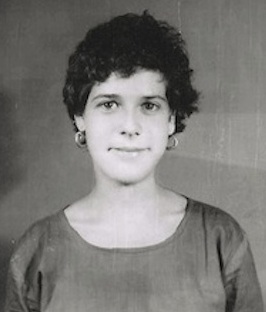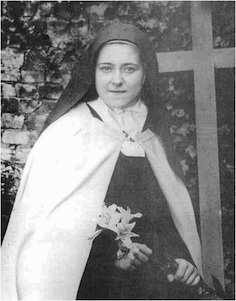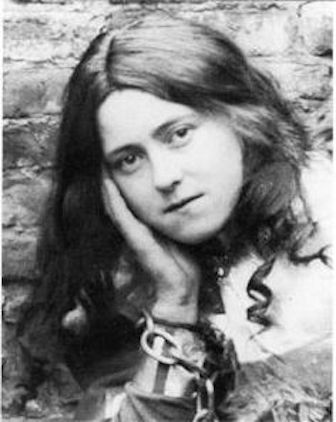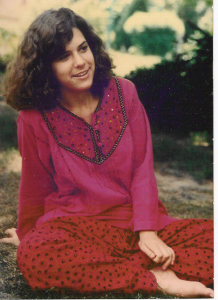Posts Tagged ‘Jessica Rattner’
Follow Your Heart ~
Treasure Hunt Instructions
“The way is not in the sky.
The way is in the heart.”
~ Buddha
“As far, verily, as this world-space extends,
so far extends the space within the heart…”
~ Chandogya Upanishad 8.1.3
“Follow your heart – even if it contradicts my words”
“If there is love in your heart,
you don’t have to worry about rules.”
~ Shri Dhyanyogi Madhusudandas
“The most beautiful people we have known are those who have known defeat, known suffering, known struggle, known loss, and have found their way out of the depths.”
“These persons have an appreciation, a sensitivity, and an understanding of life that fills them with compassion, gentleness, and a deep loving concern.”
“Beautiful people do not just happen.”
~ Elisabeth Kübler-Ross, (Death: The Final Stage of Growth, 1975)
“It is in the darkness that one finds the light.”
~ Meister Eckhart
“Only people who are capable of loving strongly can also suffer great sorrow,
but this same necessity of loving serves to counteract their grief and heals them.”
~ Leo Tolstoy
“Suffering is the way for Realization of God.”
~ Sri Ramana Maharshi
“Out of suffering have emerged the strongest souls;
the most massive characters are seared with scars.”
~ Khalil Gibran
“None can reach heaven who has not passed through hell.“
~ Sri Aurobindo, Savitri Book Two

Ron’s Introduction to “Follow Your Heart ~ Treasure Hunt Instructions”
Dear Friends,
The following brief but profound “Follow Your Heart” sutra-poem was first composed and mailed to my daughter Jessica for her twenty ninth birthday anniversary, on May 27, 1995. Soon after launching the SillySutras website, it was published online.
As fatherly advice, I had previously counseled both Jessica and her brother Joshua to:
‘Follow your heart;
don’t harm other beings;
and if possible try to help them.’
And Jessica already had courageously followed her heart in dropping out of Amherst to seek wisdom of the East, even after her distinguished Professor of Buddhist studies, Dr. Robert Thurman, had recommended that she stay and graduate before going to India.
But in 1995 I wanted to assuage Jessica’s concerns, cheer her up, and encourage her to keep following her inner guidance. So I intuitively composed and sent her this ‘follow your heart’ sutra-poem which I first titled: “Birthday Treasure Hunt Instructions” (Later, in publishing the poem’s timeless advice, I excised the word “birthday”)
I don’t remember my thoughts about the poem when I intuitively composed and sent it to Jessica. Maybe my fatherly advice was supposed to summarize one of my favorite Shakespeare passages, in which Polonius emphasizes to his embarking son Laertes:
“This above all: to thine own self be true,
And it must follow, as the night the day,
Thou canst not then be false to any [person].”
~ William Shakespeare ~ Hamlet, Act I, Scene III
And maybe my poetic advice to Jessica, was mindfully intended to encompass the essence of the Golden Rule of reciprocal empathy that:
We do no harm and treat all beings
with the same dignity we wish for ourselves,
and that they wish for themselves.
Nor do I recall whether in 1995 I was already aware of the profound scriptural passages which I have cited above. But these sutra-poem verses can be understood as consistent with them.
Only much later did I discover Mark Twain’s humorously memorable observation that
“The two most important days in your life
are the day you are born
and the day you find out why.”
~ Mark Twain
Perhaps I was unknowingly sending Jessica a message on the anniversary of the ‘first most important day of her life’ about how to discover and celebrate the ‘second most important day of her life’.
In all events, I was convinced that by following our Sacred Heart we will be in harmony with all life everywhere.
So that as my beloved Guruji revealed:
“If there is love in your heart,
you don’t have to worry about rules.”
~ Shri Dhyanyogi Madhusudandas
Initial Dedication of “Follow Your Heart”
Thus, this sutra-poem was first deeply dedicated to inspiring us
– no matter what we experience in our worldly lives –
to always heed and follow (for us and for all others)
the Eternal inner wisdom of our shared Sacred Heart:
Follow Your Heart ~ Treasure Hunt Instructions
Follow your heart
to find what you wish.Follow your heart
to seek what you miss.Follow your heart
and you shall know this:You are your heart,
you are your bliss,You are what you seek,
you are what you miss.So follow –
and find –Your HEART.
Ron’s audio explanation and recitation of “Follow Your Heart ~ Treasure Hunt Instructions”
2023 Epilogue to “Follow Your Heart ~ Treasure Hunt Instructions”
“Follow Your Heart” was initially inspired and composed when my daughter Jessica had recently returned from seven years in India and re-enrolled at Amherst College to complete the curriculum from which she had dropped out one semester short of graduation. Since she was much older than other undergraduates she was feeling out of place, uncertain and somewhat depressed.
Thereafter Jessica graduated Amherst; attained a Smith College masters degree; met and married a ‘best friend’ husband of 23 years, and birthed two beautiful daughters one of whom is a “special needs” child who has required Jessica’s continuing personal attention.
Today, May 27, 2023, 29 years after composing the foregoing “Follow Your Heart” sutra verses I am republishing them with added above key quotations from Dr. Elisabeth Kubler-Ross, world renowned scientist, teacher, author and pioneering authority on death and dying, and others, to encourage and inspire our realization that our relative reality “inner” and “outer” space/time duality experiences are obverse perspectives of the same Absolute non-duality REALITY.
That thereby we can fearlessly endure, inwardly evolve from, and ultimately transcend previously unforeseen intense sufferings, by always remembering that
“Beautiful people do not just happen.”
~ Elisabeth Kübler-Ross
“It is in the darkness that one finds the light.”
~ Meister Eckhart
“Suffering is the way for Realization of God.”
~ Sri Ramana Maharshi
“Out of suffering have emerged the strongest souls;
the most massive characters are seared with scars.”
~ Khalil Gibran
“None can reach heaven who has not passed through hell.“
~ Sri Aurobindo, Savitri Book Two
.
Rededication and Invocation of “Follow Your Heart”
Thus, “Follow Your Heart” is deeply rededicated
to inspiring our fearless endurance of previously
unknown and unforeseen intense sufferings
with the intention of helping us and all others
to follow the Eternal Wisdom of our shared Sacred HEART
– no matter what happens in our worldly lives.
Invocation
May we always fearlessly follow
Our shared Sacred HEART –
As Eternal Peace, Life, Light, and LOVE,
No matter what happens in our worldly lives.
And so may it be!
Ron Rattner
Jessica R., Saint Teresa of Lisieux, and the Rose Petal “Miracle”
“There are only two ways to live your life.
One is as though nothing is a miracle.
The other is as though everything is a miracle.”
~ Albert Einstein
“I no longer have any great desires,
beyond that of loving ’til I die of love.”
~ Saint Teresa of Lisieux
“After my death I will let fall a shower of roses…..
I will spend my Heaven in doing good upon earth.”
~ Saint Teresa of Lisieux
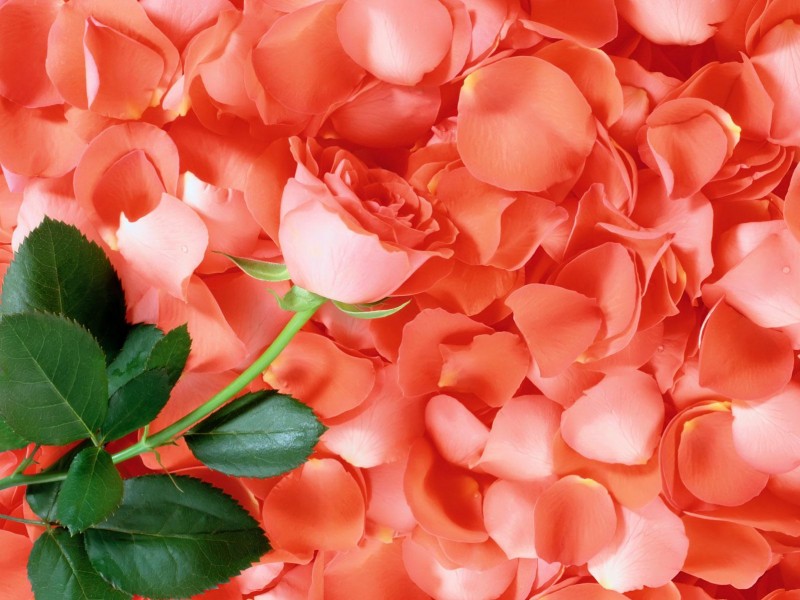
Jessica R., Saint Teresa of Lisieux, and the Rose Petal “Miracle”
On observing noteworthy phenomena which we can’t yet explain by known natural or scientific laws, we call them “miracles” and often attribute them to a Divine power. So some rare mystics and saints allegedly perform “miracles” for the good of humanity, and to foster faith in the Divine. Thus, after “miraculously” healing an official’s dying son, Jesus observed: “Unless ye see signs and wonders ye will not believe.” John 4:48
Here is a story about a noteworthy “miracle” involving my daughter Jessica and a mystery which I haven’t yet solved:
Following my traumatic 1976 divorce I did not share with Jessica and Joshua (my children who were then quite young) my intense new interest in Eastern religious philosophy. However, Jessica later independently became interested in Buddhism during a pre-college high school course in comparative religions. And she maintained her interest as she matriculated as a student at Amherst College, Massachusetts in the 1980’s.
In her 1983 application essay to Amherst, Jessica at age seventeen wrote:
“While I make no claim to being a Buddha –
a true master or enlightened being –
I have begun to understand that I must always be a seeker:
open and receptive to all new people, ideas, and things.
For although I have been extremely privileged
and have had the best possible education,
I haven’t yet and never will stop learning.
Having just recently discovered its spiritual dimensions,
I now know that a world of knowledge awaits me,
diverse and filled with surprises.
Fully aware of its vast potential and wealth,
I feel that I am ready to venture further into it,
and to explore what it has to offer.
‘I who do not know, and know that I do not know:
let me through this knowledge know.’
Idries Shah, The Way of the Sufi”
After her admittance and enrollment at Amherst, Jessica began doubting whether she was receiving there the “best possible education”. Seeking spiritual rather than secular knowledge, Jessica enrolled in and attended a brief accredited Buddhist Studies course in India sponsored by Antioch College. In 1987, after returning from India, she resumed her Amherst studies, and practiced Buddhist Vipassana meditations at a nearby Insight Meditation Society center. During a ten day silent meditation retreat there, she experienced a profoundly transformative spiritual awakening. Thereafter, her dissatisfaction with life at Amherst and her desire to go back to India gradually became so intense that she elected to leave Amherst for India, just one semester short of graduation. (Only after spending many years in India, did she return to complete her Amherst curriculum and post-graduate studies at Smith College.)
In India, Jessica initially spent time with Buddhist monks and practitioners in Bodh Gaya, a shrine where the Buddha was ‘enlightened’, and in Dharamsala, where the Dalai Lama of Tibet lived in exile with a large community of expatriated Tibetans. Then, planning to return to the US, she decided ‘out of curiosity’ to first visit a Hindu ashram in the state of Kerala, Southern India, the home of Ammachi, a renowned woman spiritual teacher. Instead of returning to finish her college curriculum, Jessica was so drawn to Ammachi and ashram life that she elected to live and remain there as a Hindu renunciate for many years. She was given by Ammachi the auspicious sanskrit name “Yogini”, wore only white attire, and contentedly lived the life of a Hindu nun.
While Jessica was living on the ashram in India, I consulted expert Vedic astrologers to interpret her chart or “karmic map”. I was told Jessica had an auspicious spiritual destiny, and that I would some day be “proud of her” spiritual achievements. Especially because of Jessica’s prior transformative meditation experience in Massachusetts, this seemed to me a credible prediction. So, I waited with interest to see what might happen with her.
In May of 1993, Ammachi was scheduled to make a world tour, including a stay at her San Francisco Bay area ashram in San Ramon, CA. And Jessica was to accompany Ammachi as part of her entourage. Jessica’s mother, Naomi, and I eagerly anticipated Jessica’s arrival in the Bay Area. While I continued to be supportive of Jessica’s life in India, Naomi was skeptical about Ammachi and strongly disapproved of Jessica’s life with her. She wanted Jessica to return home to finish her education and lead a “normal” life. Naomi was then living in a Victorian house in San Francisco, with a small raised front porch.
A day or two before Jessica’s scheduled arrival, Naomi awakened one morning with repeated thoughts of Jessica, and irrationally thereby intuited that Jessica was arriving then – early. She came downstairs from her bedroom and opened the front door, thinking that Jessica had arrived. Jessica was not there, but Naomi beheld that her entire front porch was strewn with rose petals of various colors. Since there were no nearby rose bushes, or other apparent explanation for the mysterious appearance of the rose petals, Naomi assumed that someone (probably Jessica’s “born-again Hindu” father) was playing a trick on her. Thereafter, when Jessica arrived as scheduled, Naomi reported to her the manifestation “miracle” of the rose petals.
Soon, Jessica recounted Naomi’s story to Ammachi. On hearing the story, Amachi gathered and handed to Jessica a packet of rose petals and instructed Jessica to give them to Naomi, “so that mother will remember this mother”. Jessica obliged, and on opening the packet Naomi observed that the rose petals from Ammachi were the same colors as those which mysteriously had appeared strewn on her front porch. So, Jessica believed that Ammachi had manifested the rose petals on Naomi’s porch, while Naomi remained skeptical about the incident, thinking it was some trick.
When Jessica told me that Ammachi apparently had graced Naomi with rose petals from “heaven”, I began continuously wondering about that incident. I had never before heard of any such manifestation attributed to Ammachi or any saint. And I wondered why such a special blessing was bestowed on Naomi, who was not a devotee of Ammachi but, rather, one who remained skeptical of Ammachi and her teachings. Also, I wondered why Ammachi would send rose petals to Naomi, rather than giving her some other spiritual experience that might assuage her skepticism and her consequent concern for Jessica’s future.
“Coincidentally” or synchronistically, soon after the rose petal incident, I read for the first time the autobiographical memoirs of Saint Teresa of Lisieux, the patron saint of France, entitled: “The Autobiography of Saint Therese of Lisieux: The Story of a Soul.” Teresa, who became the most popular of modern saints, entered a Carmelite convent at age fifteen and died there of tuberculosis, an unknown young nun, at twenty four. She would have remained unknown to the world but for her memoirs written at the direction of her prioress (in epistolary form) and for three volumes of her letters, all published posthumously.
In reading Teresa’s memoirs I was repeatedly reminded of Jessica. That little epistolary book reminded me of Jessica’s letters – of her way of sharing in writing her feelings about spiritual and inner matters. Also, apart from such syntactical similarities, I just constantly kept thinking of Jessica while reading about Teresa. But in no way did I then connect my repeated thoughts of Jessica, with the manifestation of rose petals on Naomi’s front porch, following Naomi’s repeated thoughts of Jessica. However, that mental/intuitive connection soon happened while I was on vacation in Northern New Mexico, visiting my spiritual author and poet friend Richard Schiffman.
In July, 1993, Richard and I journeyed to a remote Benedictine monastery calIed “Christ in the Desert”, situated in a very beautiful canyon on a wild river. Previously, I had asked Richard and others if they knew of any other examples of rose petal manifestations by saints, like Ammachi’s apparent rose petal “miracle” on Naomi’s front porch. Until then, no one was able to identify for me any such alleged manifestation by Ammachi or anyone else.
Not until my visit to the book shop at Christ in the Desert, did I find what I was seeking. At the book shop I found several books about Teresa of Lisieux, and I told Richard how Teresa’s autobiography had reminded me of Jessica. Thereupon, Richard remembered that Teresa had been associated with rose petal “miracles”; that during her life she often threw rose petals; that during her last illness she had announced: “After my death I will let fall a shower of roses”; and, that rose petal manifestation “miracles” (amongst others) were posthumously attributed to her.
Apparently, those “miracles” together with the publication of Teresa’s autobiographical diaries and letters resulted in such an outpouring of public sentiment that the Vatican “fast-tracked” petitions for her beatification and canonization in a manner unprecedented in modern times. When Teresa died, she was an unknown young nun. But for her writings about her inner life and aspirations, she would have remained historically unrecognized, and she would not have inspired millions of people to her ‘little way’ of spiritual devotion.
On returning to San Francisco from New Mexico, I began reading biographical materials about Teresa, and discovered some noteworthy parallels between Teresa and Jessica. Teresa – like Jessica – was a beautiful, precocious, sensitive and charismatic child to whom people were instinctively attracted. From childhood, Teresa – like Jessica – suffered from depression and other psychological insecurity issues without any apparent cause. Teresa – like Jessica – had hypersensitive hearing. In childhood, Teresa – like Jessica – could be obstinate about her wishes. From an early age Teresa – like Jessica – often showed wisdom and judgment well beyond her years. Teresa – like Jessica – had a simple yet elegant and eloquent way of sharing in diaries and epistolary writings her feelings about spiritual and inner matters.
On the eve of entering the Carmelite convent, Teresa wrote to her sister Agnes: “I want to be saint”, an aspiration which she often reiterated thereafter. In India, after soul searching and wondering about her life’s purpose, Jessica intuited and wrote in her daily journal her answer to that question: “I want to be saint”. (It is difficult to explain from her Jewish background, Jessica’s extraordinary aspiration to be a saint. Also it was surprising to me that Jessica assiduously kept journal diaries throughout her stay in India and prior thereto, a practice not instilled by her parents.)
The biographical materials about Teresa confirmed what Richard Schiffman told me at Christ in the Desert: that throughout her life Teresa loved throwing flowers and scattering rose petals as religious offerings; that shortly before her death Teresa proclaimed, “After my death I will let fall a shower of roses.” “I will spend my Heaven in doing good upon earth.”; and that rose petal manifestations were posthumously attributed to Teresa.
Also, l learned that just after Teresa’s twenty first birthday (January 2, 1894), she abandoned the sloping handwriting style which theretofore had been imposed upon her, and began to write in the way that came naturally to her: upright. In comparing photos of Teresa’s upright handwriting with Jessica’s upright handwriting, I perceived noteworthy similarities. But most noteworthy for me was comparison of photographs of Teresa and Jessica taken at similar ages. I found great similarities in their faces, especially in the eyes. To make sure I wasn’t hallucinating, one Sunday on visiting my beloved Jewish mother, Sue, I showed her a picture of Teresa dressed in nun’s habit, and asked: “Mom does this photo remind you of anyone?” Her prompt reply was: “She looks like Jessica, especially around the eyes.”
Here are the photos of Teresa and Jessica, which I found noteworthy:
By 1995, Jessica had a change of heart about continuing her life as a Hindu nun at Ammachi’s ashram. After much soul searching, she decided that she did not want to spend the rest of her life in India as a nun; that she wanted to finish her US education, marry and have children. And so after spending many years in India – in Bodh Gaya, Dharamsala, and Kerala – Jessica returned to Massachusetts to complete her Amherst curriculum and post-graduate studies at Smith College. At Smith she met and thereafter married David Channer. Their first child, Uma, was born on January 2, 2000, the 127th anniversary of Teresa’s birth on January 2, 1873.
In researching Saint Teresa, I learned that Father Jacques Sevin, a priest who founded the Boy Scouts of France, was one of her early and exceptionally ardent and influential devotees. And I found in his photo on the Internet an unusual resemblance to Jessica’s husband, David. Here are photos of Father Sevin and David Channer which I found noteworthy:


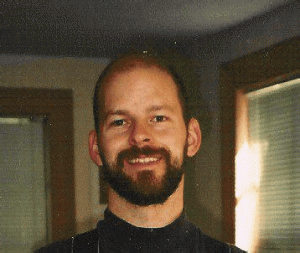
After Jessica returned to Massachusetts, I reported her changed status – from Hindu nun to American householder – to my friend Pravin Jani, father of spiritual teacher Shri Anandi Ma, and expert Vedic astrologer and pundit who had predicted an auspicious spiritual future for Jessica. His brief comment was: “Very good. She needs that experience in this lifetime.”
What does this all mean? Why did it happen? How did it happen?
I don’t know.
Did Ammachi manifest rose petals on Naomi’s porch? If so, why?
Did Saint Teresa? If so, why?
Until now, Jessica hasn’t wanted to even hear or talk about this subject. But for me it raises significant questions not only about the rose petal manifestation mystery, but about prevailing Eastern views on “reality”, afterlife, reincarnation, and evolutionary transmigration of the soul from lifetime to lifetime.
What do you think?
Remember, your thoughts are important:
“We are what we think.
All that we are arises with our thoughts.
With our thoughts, we make the world.”
~ Buddha
© The Perennial Wisdom Foundation – “From Secular Hebrew, to Born-Again Hindu, to Uncertain Undo – An ex-lawyer’s spiritual metamorphosis from Litigation to Meditation to LOVE.”
~ by Ron Rattner

